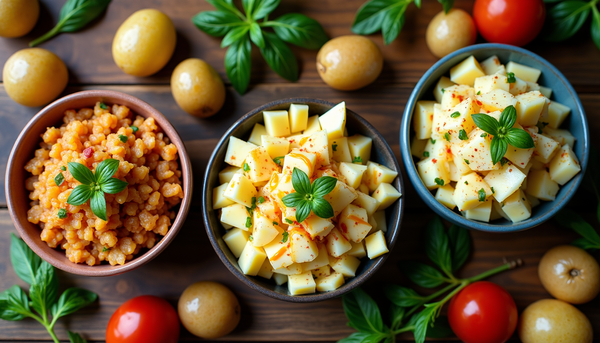The Nut Optimization Problem

Last Tuesday, I found myself standing in the bulk foods aisle for 23 minutes. Twenty-three minutes! Just staring at nuts.
My wife texted asking if I was okay. My response? "Just optimizing our nut strategy." She didn't text back.
But here's the thing - I wasn't being completely ridiculous (okay, maybe 70% ridiculous). The whole nuts debate in the fitness world has been bugging me for months. It's like watching two development teams argue about programming languages when they're both trying to solve different problems.
Why We're Asking the Wrong Question
The nutrition community loves a good binary debate. Carbs: good or evil? Fats: friend or foe? And now nuts have joined this tiresome lineup. But asking "are nuts good or bad?" is like asking "are tools useful?" Well... which tool? For what job?
I spent three years debugging code that other people wrote before I learned this lesson: context is everything. The same principle applies to nuts, except instead of fixing someone else's messy JavaScript, we're trying to optimize our biological hardware.
The Four Variables That Actually Matter
After diving deep into research (and yes, spending way too much time in grocery store aisles), I've identified four key variables that determine whether nuts deserve a spot in your nutrition stack:
Variable #1: The Protein Puzzle
Here's where things get interesting. A lot of people treat nuts like they're protein powerhouses, but let's run the numbers.
One ounce of almonds gives you about 6 grams of protein. Sounds decent, right? But that same ounce packs 164 calories. Compare that to an ounce of chicken breast: 8 grams of protein, 47 calories.
It's not that nuts are "bad" protein sources - they're just inefficient ones if protein is your primary objective. Think of them as the scenic route to your protein goals. Sometimes you want efficiency (chicken, fish, legumes), sometimes you want the scenic route with extra benefits (nuts with their healthy fats and micronutrients).
Cashews are actually the worst offenders here - only 4.3g protein per ounce. Meanwhile, peanuts (technically legumes, but whatever) deliver a more respectable 7.3g per ounce.
Variable #2: The Digestive Reality Check
This is where my engineer brain gets excited, because we're basically talking about bioavailability and system tolerance.
Some people can demolish a handful of raw almonds without issue. Others feel like they swallowed gravel. The difference often comes down to:
Processing method: Soaked and sprouted nuts are generally easier to digest because the process breaks down phytic acid and enzyme inhibitors. It's like pre-processing data before feeding it into your system.
Individual gut health: If you're dealing with digestive issues, raw nuts might feel like running a demanding program on limited RAM. Your system just can't handle the load efficiently.
Portion timing: Eating nuts on an empty stomach vs. with other foods can dramatically affect how your system processes them.
Variable #3: The Calorie Density Trap
This is where nuts become dangerous for some people, and I speak from experience.
Nuts are what I call "background calories" - you can easily consume 400-500 calories worth while barely registering that you've eaten anything substantial. It's like those tiny memory leaks in code that seem harmless individually but eventually crash your system.
A single ounce of macadamia nuts contains 204 calories. One ounce! That's roughly 10-12 nuts. I've definitely eaten 30+ macadamias while reading documentation, thinking I was just "snacking."
But here's the plot twist: some research suggests that we don't absorb all the calories from nuts due to their structure and our chewing efficiency. We might only absorb 80-90% of the listed calories. It's like built-in error handling.
Variable #4: The Micronutrient Bonus Features
This is where nuts start to shine. They're not just delivering macronutrients - they're packed with bonus features:
- Vitamin E: Almonds are basically vitamin E delivery systems
- Magnesium: Brazil nuts and cashews excel here
- Healthy fats: Walnuts bring omega-3s to the party
- Fiber: Most nuts contribute decent fiber numbers
It's like getting a library that not only solves your immediate problem but comes with useful utilities you didn't know you needed.
My Personal Nut Selection Framework
After all this analysis (and yes, I built a spreadsheet), here's my decision tree:
If your primary goal is protein: Nuts aren't your optimal choice. Use them as a supporting player, not the lead actor.
If you're trying to lose weight: Portion control becomes critical. Pre-measure everything. I use small containers because my brain apparently can't be trusted with bulk quantities.
If you have digestive issues: Start with soaked almonds or nut butters. Avoid going straight to raw cashews - that's like jumping into advanced algorithms without understanding the basics.
If you're maintaining or gaining weight: Nuts become much more useful. They're an efficient way to add quality calories without feeling overly full.
The Practical Stuff (Because Theory Without Implementation Is Useless)
Here's what actually works in real life:
Portion hack: Buy those 100-calorie packs or make your own. Yes, it's more expensive per ounce, but it's cheaper than accidentally eating 600 calories of almonds while answering emails.
Timing matters: I eat nuts with meals, not as standalone snacks. They're less likely to trigger mindless overconsumption when my satiety signals are already engaged.
Quality over quantity: Buy the good stuff. Organic, minimal processing, no weird oils. If you're going to allocate calories to nuts, make them count.
Rotation strategy: Different nuts have different nutritional profiles. I rotate through almonds, walnuts, and brazil nuts rather than committing to one type.
The Bottom Line (Finally)
Nuts aren't good or bad - they're tools with specific use cases. The key is matching the tool to the job.
If you're a 150-pound woman trying to lose weight, your nut strategy should look completely different from a 200-pound guy trying to gain muscle. Context matters more than the food itself.
Your turn: What's your biggest challenge with nuts? Are you team "accidentally ate the entire bag" or team "can't digest them without issues"? Drop a comment - I'm genuinely curious if my overanalyzed framework resonates with anyone else's experience.
And if you see someone standing motionless in the bulk foods aisle for an unreasonable amount of time... that might be me, still optimizing.




